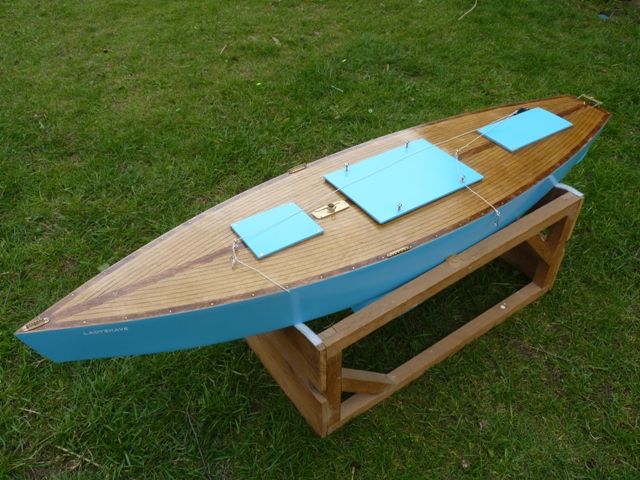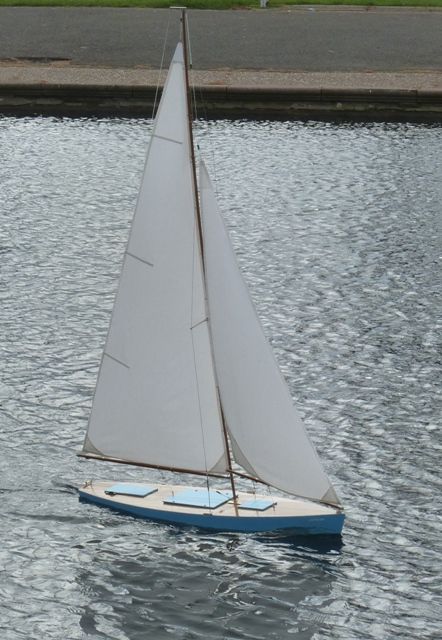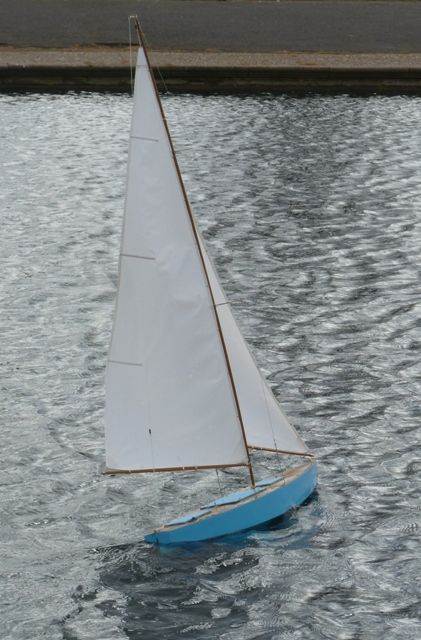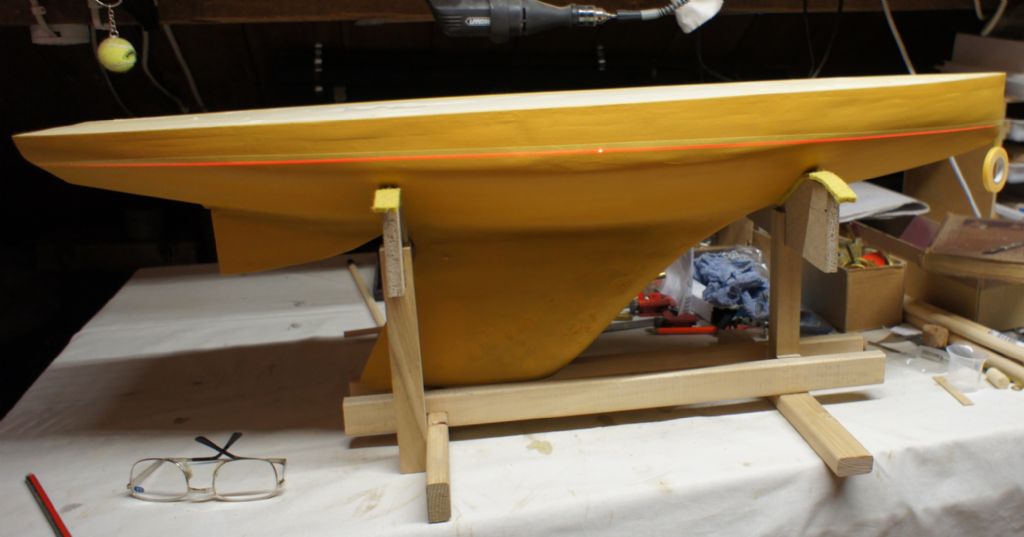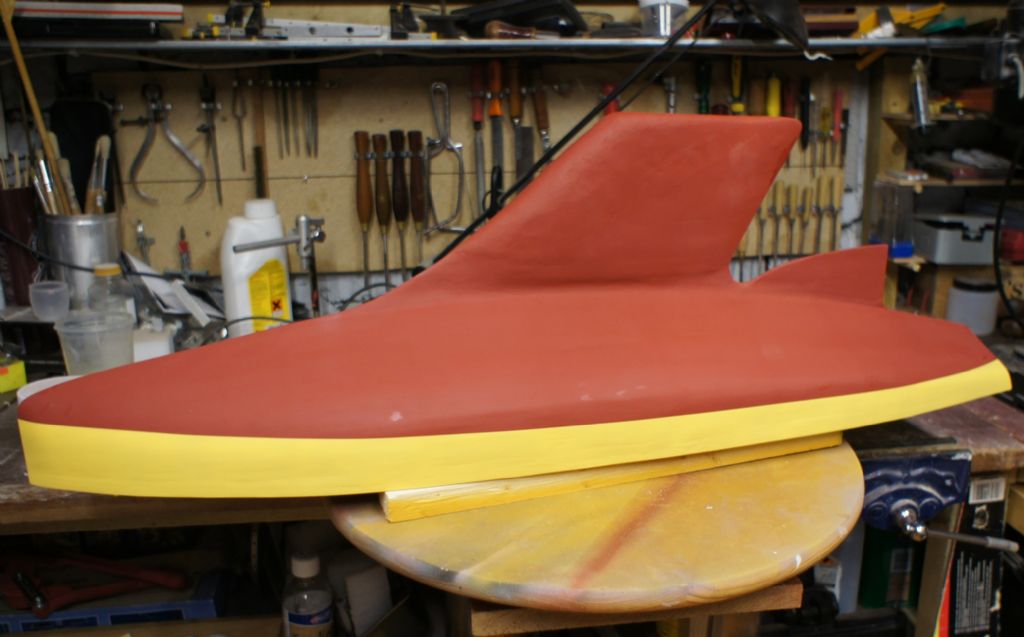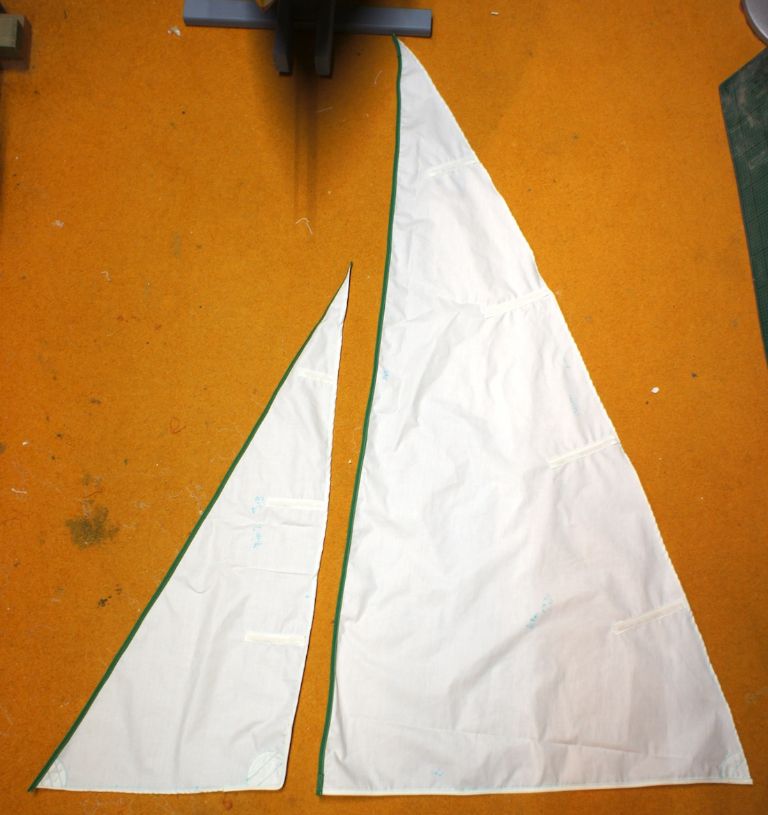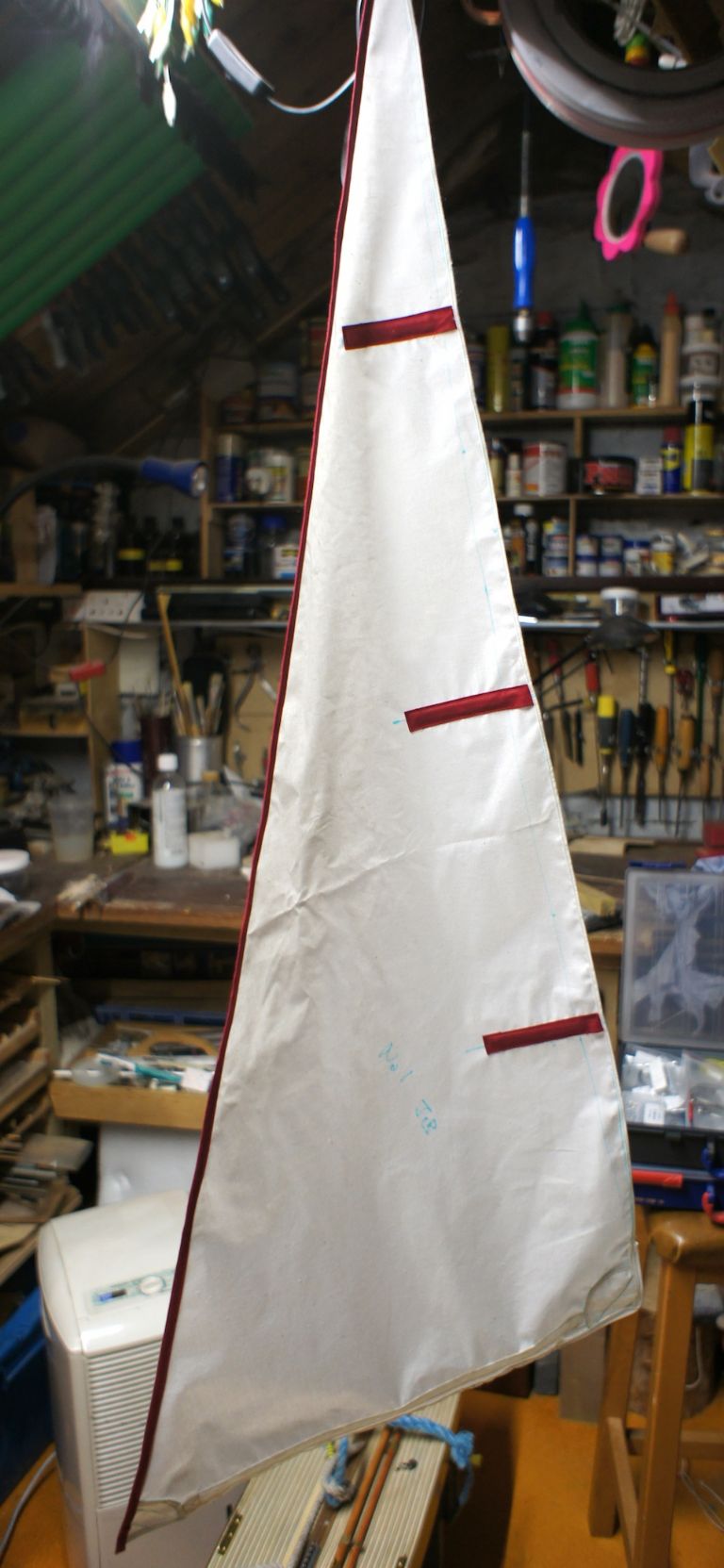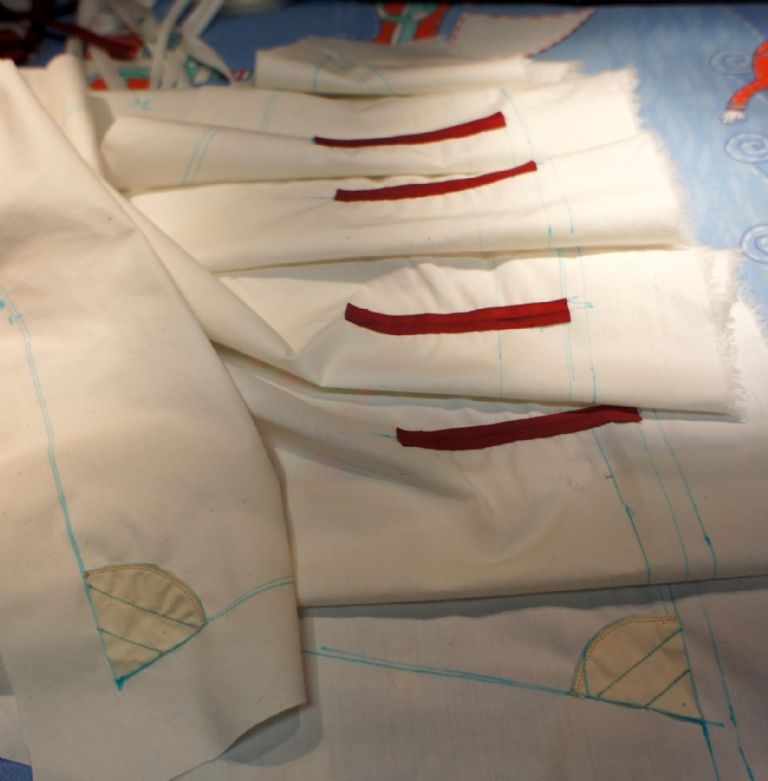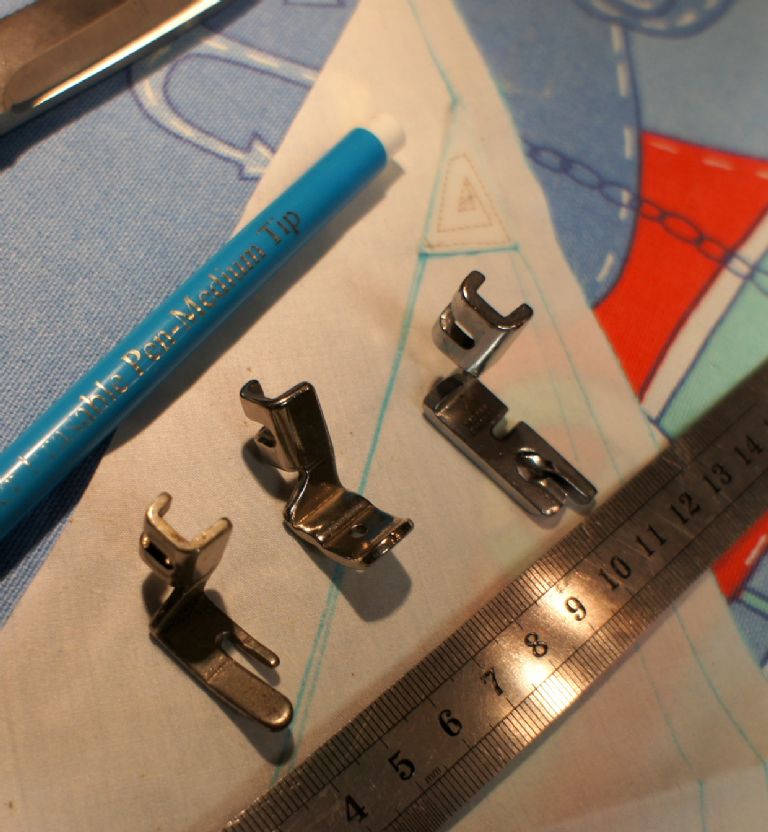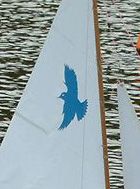Right ho, lets give some more information.
First, sail changing during a "race" called a board (three legs, two beats and a run) is permitted, as the run can be made by attaching a spinnaker (and removing the jib). You cannot change a sail in the part being sailed, but the team can make adjustments at the turn or simply turn the boat to the next required course. Each part of the board is sailed separately. So in bewteen the boats are set up for the next part. You have to walk back to the start anyway, and there can be up to three pairs on the water at the same time, hopefully separated enough so that they don't mingle!!
The rudder travel is controlled by a pin rack (if fitted) this can limit or stop the throw on the tiller. The tiller/rudder is returned to it's center position by an elastic band the tension of which can be varied to meet wind conditions and required response.
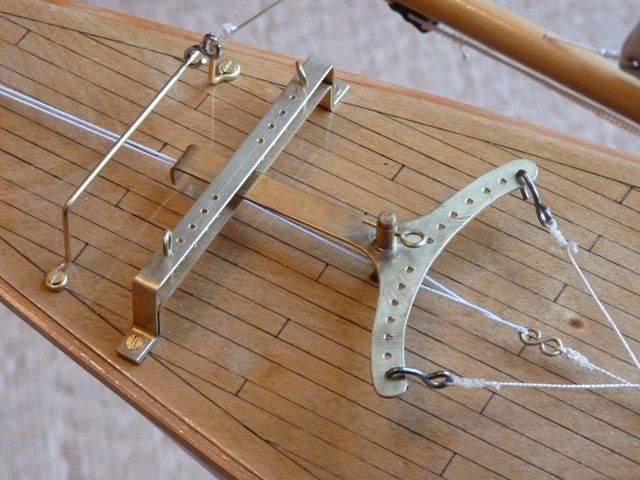
In this image the pin rack is behind the Braine quadrant and in front of the main beating hawse. A very light elastic is being used, its white and under the Braine quadrant. The beating sheet is in use, and it appears that with only one hook each side on the quadrant, that the jib and main running sheets are joined.
Now the sheets and how they're set up.
This picture shows it very well, and I've introduced coloured arrows to show the two sheeting sets. I'll use this image to set up my boat, even though this is an A class Braine boat.
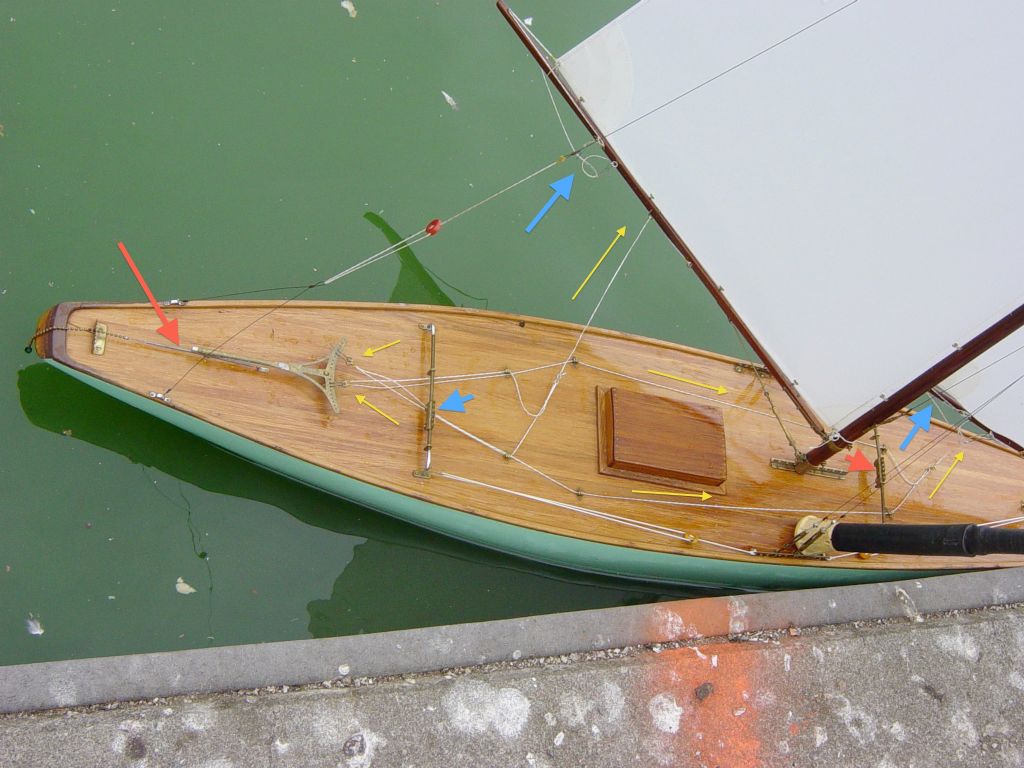
The large red arrow at stern indicates a much stronger elastic set up to hold the rudder to the center position. The large blue arrows (and small red arrow foreward) show the beating hawses and the beating sheets with the main beating sheet hooked onto the boom out of the way.
The yellow arrows show the running sheets which are a bit more complex in that they cross over and both the jib and main sail sheets, which can combine to a single hook, are, in the arrangement above separate and hooked onto the Braine quadrant at differing points. This will be because of two factors. The first, it is not unusual for a yacht to have slightly different course when the sheets are set the same when sailing to port or starboard. The second, it may be that the desired course is to sail different angles on the apparent wind to make the finish easier, say first course a run of 40' and the second to be 55'.
You can also see that the running sheets rove through a pulley either side of the center line, and not from a hawse. They are length adjusted with bowsies, as are the beating sheets. The running sheets are in pairs and the beating sheets is a single sheet, the traveller crosses the hawse when goig onto the opposite tack.
Because the running sheets are longer, during the beat the beating sheets are just hooked up on the hawse runner. Clever teams can change the beat sheet to another hook point on the turn, which will change the course sailed slightly. The rudder/tiller when beating will be held at center by the elastic. If helm is required then the pinrack can be used to introduce a bias to one side, BUT it is essential that the yacht has some weather helm – that is, when hard pressed it will want to come up into the wind, so taking pressure off the sails. It is this area I have to learn whether any control to the Braine gear is made to counter this effect. When sailing in a race it's always important to make as much to windward as possible.
If you are sailing with radio gear then ignore all the above. A joined sheet to jib and main to a servo winch or arm, and the rudder (which requires deepening for bite) controlled by another servo. You have using the radio, the means to alter the sail positions, something which cannot be done with free sailing.
Any clearer Bob?
Kim
Edited By Kimosubby Shipyards on 16/05/2013 11:27:28
Edited By Kimosubby Shipyards on 16/05/2013 11:31:10
Edited By Kimosubby Shipyards on 16/05/2013 11:35:05


